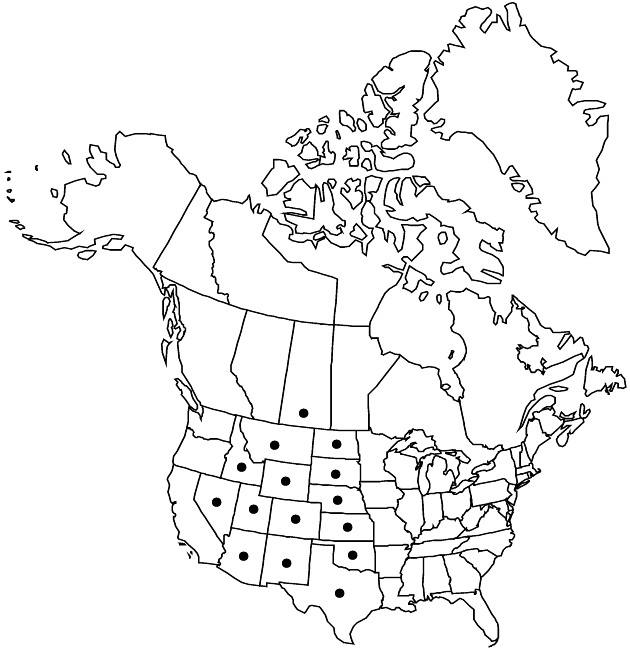Difference between revisions of "Ericameria nauseosa var. graveolens"
Proc. Acad. Nat. Sci. Philadelphia 149: 20. 1999.
Common names: Pungent rabbitbrush
Basionym: Chrysocoma graveolens Nuttall Gen. N. Amer. Pl. 2: 136. 1818
Synonyms: Chrysothamnus nauseosus subsp. graveolens (Nuttall) H. M. Hall & Clements Chrysothamnus nauseosus var. graveolens (Nuttall) H. M. Hall Ericameria nauseosa var. glabrata (A. Gray) G. L. Nesom & G. I. Baird
FNA>Volume Importer |
FNA>Volume Importer |
||
| Line 11: | Line 11: | ||
|name=Chrysocoma graveolens | |name=Chrysocoma graveolens | ||
|authority=Nuttall | |authority=Nuttall | ||
| + | |rank=species | ||
|publication_title=Gen. N. Amer. Pl. | |publication_title=Gen. N. Amer. Pl. | ||
|publication_place=2: 136. 1818 | |publication_place=2: 136. 1818 | ||
| Line 17: | Line 18: | ||
|name=Chrysothamnus nauseosus subsp. graveolens | |name=Chrysothamnus nauseosus subsp. graveolens | ||
|authority=(Nuttall) H. M. Hall & Clements | |authority=(Nuttall) H. M. Hall & Clements | ||
| + | |rank=subspecies | ||
}} {{Treatment/ID/Synonym | }} {{Treatment/ID/Synonym | ||
|name=Chrysothamnus nauseosus var. graveolens | |name=Chrysothamnus nauseosus var. graveolens | ||
|authority=(Nuttall) H. M. Hall | |authority=(Nuttall) H. M. Hall | ||
| + | |rank=variety | ||
}} {{Treatment/ID/Synonym | }} {{Treatment/ID/Synonym | ||
|name=Ericameria nauseosa var. glabrata | |name=Ericameria nauseosa var. glabrata | ||
|authority=(A. Gray) G. L. Nesom & G. I. Baird | |authority=(A. Gray) G. L. Nesom & G. I. Baird | ||
| + | |rank=variety | ||
}} | }} | ||
|hierarchy=Asteraceae;Asteraceae tribe Astereae;Ericameria;Ericameria nauseosa;Ericameria nauseosa var. graveolens | |hierarchy=Asteraceae;Asteraceae tribe Astereae;Ericameria;Ericameria nauseosa;Ericameria nauseosa var. graveolens | ||
| Line 46: | Line 50: | ||
-->{{#Taxon: | -->{{#Taxon: | ||
name=Ericameria nauseosa var. graveolens | name=Ericameria nauseosa var. graveolens | ||
| − | |||
|authority=(Nuttall) Reveal & Schuyler | |authority=(Nuttall) Reveal & Schuyler | ||
|rank=variety | |rank=variety | ||
| Line 61: | Line 64: | ||
|publication year=1999 | |publication year=1999 | ||
|special status= | |special status= | ||
| − | |source xml=https://jpend@bitbucket.org/aafc-mbb/fna-data-curation.git/src/ | + | |source xml=https://jpend@bitbucket.org/aafc-mbb/fna-data-curation.git/src/eaa6e58056e40c9ef614d8f47aea294977a1a5e9/coarse_grained_fna_xml/V19-20-21/V20_105.xml |
|tribe=Asteraceae tribe Astereae | |tribe=Asteraceae tribe Astereae | ||
|genus=Ericameria | |genus=Ericameria | ||
Revision as of 19:23, 16 December 2019
Plants 50–160 cm. Stems yellowish green to nearly white, leafy, compactly, smoothly tomentose. Leaves greenish; blades 3-nerved, broadly linear, 30–90 × 1–3 mm, faces often tomentulose. Involucres 6–8 mm. Phyllaries 14–18, apices erect, acute, abaxial faces usually glabrous, outer sometimes sparsely hairy. Corollas 7–9+ mm, tubes puberulent or glabrous, lobes 0.6–1.5, glabrous; style appendages longer than stigmatic portions. Cypselae densely hairy; pappi 4.9–6.5 mm. 2n = 18.
Phenology: Flowering late summer–fall.
Habitat: On plains in slightly alkaline soils
Elevation: 200–2000 m
Distribution

Sask., Ariz., Colo., Idaho, Kans., Mont., Nebr., Nev., N.Mex., N.Dak., Okla., S.Dak., Tex., Utah, Wyo.
Discussion
Selected References
None.
Lower Taxa
None.